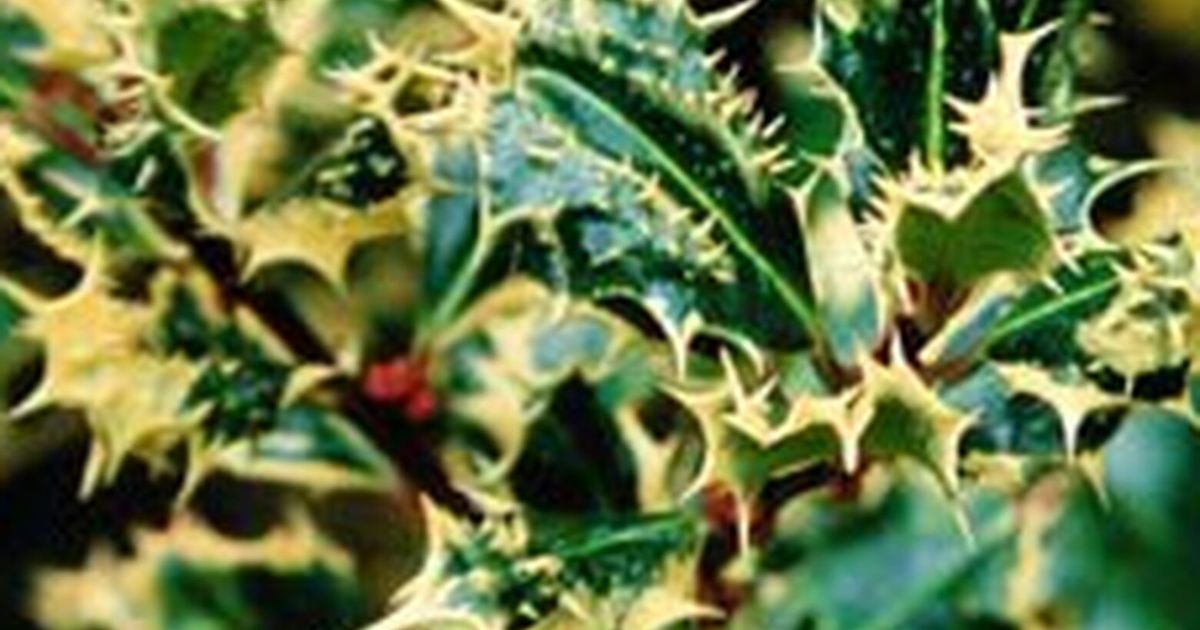
Editor’s Note: Vintage Pacific NW revisits some of our favorite stories from some of our favorite magazine contributors. Check back each week for timeless classics focusing on food (by Nancy Leson, Providence Cicero, and chefs Greg Atkinson and Kathy Casey), gardening (by Valerie Easton and Ciscoe Morris), fitness (from former Fit for Life writer Nicole Tsong), architecture (from former NW Living writer Lawrence Kreisman), wine (from local guru Andy Perdue) and more.
Originally published Dec. 17, 2000
By Valerie Easton, former Natural Gardener writer
COME DECEMBER, I appreciate a friend who gives garden room to one of those big green holly trees. She lets me come by to cut branches for wreaths and swags, so I get the seasonal benefit without the mess, girth and prickliness such a dense plant brings to the garden.
Yet there are less imposing hollies to choose from that make fine additions to the garden while supplying festive fodder.
The fat little hedgehog holly, also called porcupine holly (Ilex aquifolium ‘Ferox Aregentea’), is a year-round looker, perfect for anchoring the corner of a border. It is a berry-less male and slow-growing. Mine is only 3 feet tall and as wide after seven years. Each leaf is margined in warm cream, with a crinkly twirl that makes it appear as if perpetually caught in a high wind blowing in different directions.
The center of a leaf of Ilex aquifolium ‘Golden Milkboy’ is bright golden yellow trimmed in dark green; I. aquifolium ‘Silver Milkmaid’ is stunning, with silvery white and green leaves and an abundance of scarlet berries. Some hollies are really tiny; Ilex ‘Rock Garden,’ growing to about a foot high, is perfect for containers.
When you choose a holly for your garden, think about its natural shape, habit and eventual size. Hollies are the most prunable of plants, although you’ll want thick gloves for the task. They make handsome hedges, and one of the finest I’ve seen is an old one where the gardener has encouraged rogue seedlings to settle in and mix with the holly to create a thick tapestry reminiscent of a tidily trimmed hedgerow.
Hollies can be pruned into topiary or bonsai, kept a tidy size in containers or pruned in the Japanese style into the rounded curves of boulders. Some are deciduous; most are evergreen; some form low cushions; others grow naturally into tall, slender cones. In fact, hollies come in every plant form except vining.
If you want berries, remember that hollies are dioecious, meaning they come in male and female, and only the female bears fruit. You’ll need one male of the same species for one or more females. The same-species part isn’t a strict rule, as sometimes bees pollinate different holly species if they flower at the same time, but to be sure your hollies bear fruit, plant a same-species male nearby.
Holly is rich in symbolism and superstition, serving as medicine and legend in diverse cultures for thousands of years. The pre-Christian Druids in England and Gaul brought holly boughs indoors so woodland spirits could safely shelter from the winter cold — hence the first holiday decorations.
One old legend claims that all holly berries were yellow until Christ’s blood spilled upon them, staining them red forever.
In Rome, holly wreaths were sent to newlyweds as tokens of good wishes, and holly has been used as a cure for coughs, rickets and tuberculosis. Many holly traditions have to do with decorating, no doubt because early people appreciated its glossy leaves and bright berries in the dark of winter, just as we do today. But be careful: In early England, it was thought that if you decorated with smooth holly, the wife would command the household during the coming year; if prickly holly was used, the husband would be in charge.
I found these tales in Fred Galle’s encyclopedic “Hollies: The Genus Ilex” (Timber Press, 1997, $59.95). If you prefer to stretch your legs while you learn, the holly collection at Washington Park Arboretum is a fine excuse for a winter walk. One of the oldest collections at the Arboretum, it has such a diversity of plantings that you’ll never again be able to think of hollies as simply shapeless green bushes with red berries.


More Stories
Southwest’s epic holiday meltdown could cost it $825 million
From orphans to best friends, Woodland Park Zoo welcomes new bear cubs
Tacoma zoo welcomes new Sumatran tiger